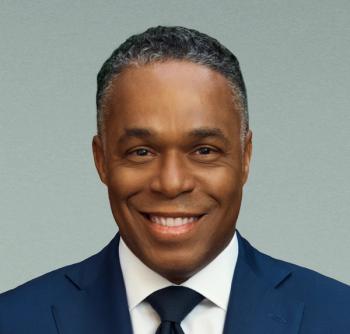
After UnitedHealthcare CEO’s killing, conversations around security are changing
Brian Thompson was fatally shot in New York City and a suspect has been arrested. Eric Sean Clay of the International Association for Healthcare Security and Safety discusses new measures health organizations are considering.
Healthcare organizations are examining their security measures, including the protection of their top executives, in the wake of the killing of UnitedHealthcare CEO Brian Thompson.
Eric Sean Clay, president of the International Association for Healthcare Security and Safety, tells Chief Healthcare Executive® that insurance companies and hospital organizations are considering new security measures in light of Thompson’s killing.
“I think prior to this particular event … that a lot of healthcare executives really didn't want executive protection,” Clay says. “They felt that there was just really no need for it.”
“But I think that in light of this particular event, I think they're certainly reconsidering their position on that. I think that boards for a lot of these organizations are certainly reconsidering that and probably going to start mandating protection for some of their CEOs, especially larger organizations,” he says. “I think they're going to do that because they really want to ensure that stability and continuity of the leadership of the organization. If they're publicly traded, I think they're going to want to ensure their investors have confidence that that stock price is going to maintain high or where it's at.”
(See part of our conversation in this video. The story continues below.)
More considerations of security
Clay serves as vice president of security services for the Memorial Hermann Health System, where he leads a team of more than 450 at the system’s 17 hospitals and 260 healthcare sites.
Healthcare executives are also likely to give more deference to their security teams.
“I think security teams, quite often, will provide guidance to them around particular threats that may not have been listened to previously,” Clay says.
Healthcare organizations are also going to assign more resources to their top executives, including threat management teams and additional security personnel. Clay says he’s already seen more job advertisements from companies hiring to bulk up their security teams, including professionals in executive protection.
Long before the killing of the UnitedHealthcare CEO, Clay has said organizations should be thinking more seriously about doing more to protect their top executives. In May 2023, he and security expert Paul Sarnese
“For many, healthcare provides an absolute target for their anger and hatred,” they wrote. “Family members who have lost a loved one may feel as though the physician or organization did not do enough to save their loved one.”
Now, in light of Thompson’s death, healthcare organizations may also consider giving security leaders direct access to the CEO, Clay says.
He also says some health companies may start thinking about reducing the number of in-person meetings.
“I think you'll also see more virtual meetings. We'll go back to some of that, the Zoom meetings … to better protect some of their executives,” Clay says.
Hospitals remain targets
More hospitals and health systems are also going to be reconsidering their security measures, Clay says
While the suspect targeted the head of an insurance company, Clay notes that hospitals also deal with aggravated patients, including some who aren’t satisfied with their care or the treatment of a loved one.
“Healthcare organizations are very similar in that people blame the healthcare organization, whether it be the physician or the person who leads that healthcare organization,” Clay says. “I think that they see them kind of rather similar, and they're an absolute target for anger and hatred quite often, if there's a negative outcome.”
Clay adds, “I think you'll definitely see them beefing up their security as well.”
In 2022,
Fatal shootings have happened at other hospitals and health systems, but it’s far more common for
Health system leaders are, or should be, reviewing security plans and protocols, Clay says.
And they probably are taking a second look at threatening messages they’ve received.
“I think they're updating all their risk and threat assessments, going back through some of the threats that they've received in the past,” he says. “I think they're actively working on those.”
“I think they're looking at access to resources again that they probably didn't have before, maybe some of the ‘asks’ that they had made and didn't get again,” he says. “That could be additional staffing, new technologies, more training.”
Given the need to invest in patient care, some health systems may be leery of boosting their security budgets.
As Clay acknowledges, “It’s a delicate balance.”
“The CEO is in charge, overseeing the entire organization. I think that they have a very important role. They ensure the viability, the success of the organization, so making sure that they're able to continue to serve in that capacity is critical,” Clay says.
Still, organizations need to consider investing more on security, including measures to bolster protection of their leaders, Clay says.
“I think that there's probably opportunities to reallocate resources to make sure that they're able to do that so they can continue to serve the community,” Clay says. “It’s difficult to say where that money might come from, but again, I think in healthcare, we're always looking for opportunities to better use our resources. I think that this is one of these things that we're going to have to figure out a way to make it happen.”






































